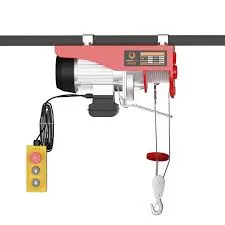


Understanding Industrial Fall Protection Ensuring Workplace Safety
Industrial fall protection is a critical aspect of workplace safety, particularly in environments where employees work at heights. Falls are one of the leading causes of injuries and fatalities in various industries, including construction, manufacturing, and warehousing. Therefore, implementing robust fall protection measures is not just a regulatory requirement but also an ethical obligation to safeguard workers.
One of the key components of industrial fall protection is understanding the different types of fall hazards that exist in the workplace. Fall hazards can range from unprotected edges, holes, and roof work to dangerous ladders and scaffolds. Employers must conduct comprehensive risk assessments to identify potential fall risks specific to their work environment. By recognizing these hazards, companies can implement appropriate fall protection strategies.
The most widely recognized approach to fall protection is the hierarchy of controls, which prioritizes methods to reduce or eliminate fall risks. The first line of defense is the elimination of the hazard where possible; for instance, redesigning a task to be performed at ground level instead of at height. If elimination is not feasible, the next strategy involves using engineering controls such as guardrails, safety nets, and specialized equipment like aerial lifts.

When engineering controls are insufficient, administrative controls play a vital role. This includes establishing strong safety policies, conducting regular safety training, and ensuring that workers understand proper work practices. Training should cover the use of personal protective equipment (PPE), which often consists of harnesses, lanyards, and anchorage systems. Proper training empowers workers to recognize hazards and respond appropriately to minimize risks.
Additionally, regular inspection and maintenance of fall protection equipment are essential. Equipment should be checked frequently to ensure it is in good working order and free from defects that could lead to failure. Employers should maintain records of inspections and ensure that all equipment meets relevant safety standards.
Another crucial factor in fall protection is fostering a safety culture within the organization. This involves encouraging open communication about safety concerns and reinforcing the importance of compliance with safety protocols. When employees feel that their safety is a priority, they are more likely to engage in safe behaviors and report unsafe conditions.
In conclusion, industrial fall protection is an essential element of workplace safety that demands a multifaceted approach. By understanding fall hazards, implementing the hierarchy of controls, providing effective training, and fostering a safety-conscious culture, employers can significantly reduce the risk of falls and protect their workforce. Prioritizing safety not only ensures compliance with regulations but also enhances productivity and morale in the workplace.



